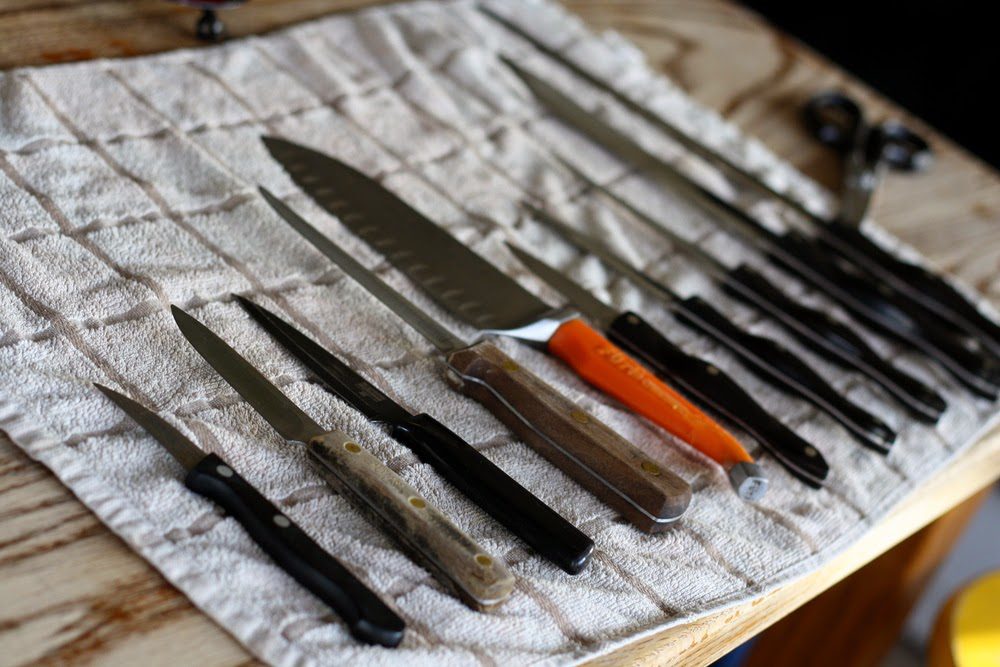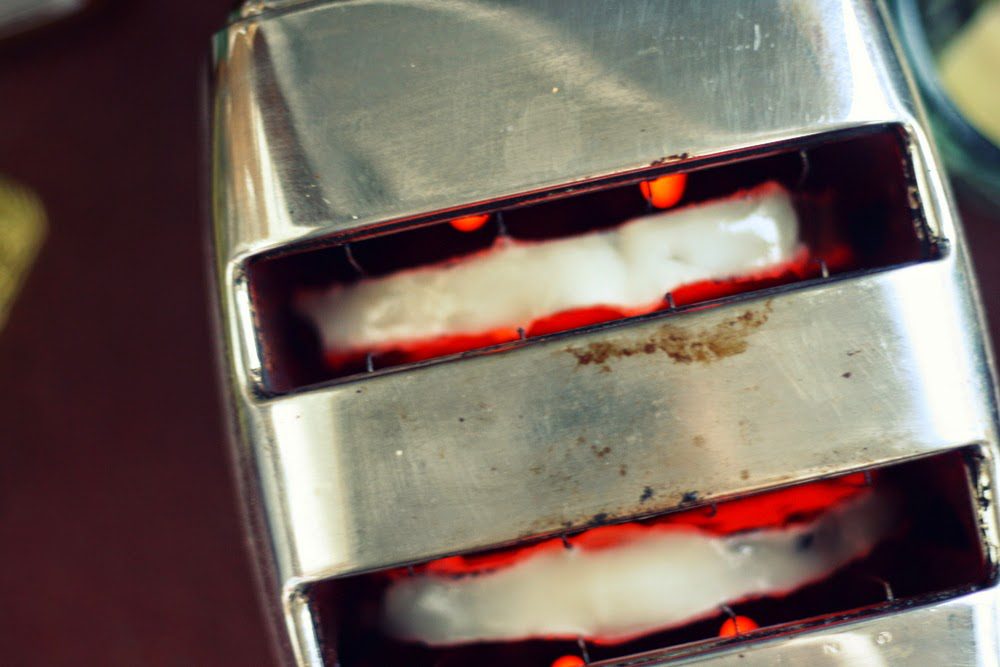Dividing the freshly mixed granola between two baking sheets, I got to thinking about kitchen utensils. See, when I had asked my son to fetch me the two baking sheets from the cupboard, he had pointed to the one and said, “Mom, I don’t think you should use this one anymore.”
“Whyever not?” I asked.
“Because it’s rusty and greasy and has black stuff around the edges. It’s gross.”
“It’s fine,” I snapped. “Give it here.”
Much of my kitchen stuff looks like that baking sheet that invoked my son’s disgust. My insulated cookie sheets are warped, their air pocket spaces filled with more water than air. When met with the slightest resistance, the heads of my rubber spatulas separate from their wooden stick bodies. My much-used pie plates are stained. My measuring cups are dented (and inaccurate, I’m sure). Even a lot of the good stuff I own—my few Cutco knives and my stove-top juicer, for example—are, respectively, dinged up and scorched.

My toaster is so ancient—a glorious thrift store find—and cantankerous that the people who rented our house while we lived in Guatemala couldn’t figure out how to use it and ended up putting it in storage and buying a new one. (We forgot to explain that you have to thump the toaster on the counter to make the toast come up.) The gears on our whirly-popper—another glorious thrift store find (because all thrift store finds are glorious!)—kept slipping until my husband finagled some sort of fix. The cord on my hand mixer is held together with duct tape.

Which makes me wonder: why is it that people who have really nice kitchen stuff don’t cook and the people who do cook make do with borderline junk? In general: the more money a person has, the more nice stuff they have to work with and the less work they have to do. The people who have less money do more manual labor with inferior tools. Have you noticed this?

It’s logical, I suppose. People with money can afford to pay for more services and therefore have less need to use the tools themselves. And if you use your stuff it’s going to show (duh).
I’m painting the picture like I’m the deprived person. But it goes both ways. Our Nicaraguan neighbor women spent the majority of their days in their dirt-floor kitchens and peeled potatoes with machetes. From their perspective, my plethora of tools are woefully underutilized and under-bunged up.
The other day a friend was admiring how lived-in our house and property look. (Seriously!) When I snorted, she said, “No really! It’s inspiring!”
Inspiring? Hmm. I tend to think of those pristine magazine-worthy kitchens—you know, the ones that have copper kettles hanging above an enormous wooden table that’s standing atop a tile floor and directly in front of an enormous six-burner gas stove—as inspiring. As in, If I were in that kitchen I’d be bake cookies from now to eternity and back.
But maybe I’m confusing envy with inspiration. Maybe “work-worn” and “dinged up” are signs of respect and appreciation, marks showing that we care about enough to actually use and do. In this case, the messes, chipped dishes, and warped pans are inspiring because they show passion.
My kitchen tools—and all tools, really—are only as wondrously useful as we make them. And the fact is, no fancy tool, no necessary fancy tool, is going to be shiny for very long.
To sum up: three cheers for battered kitchenware!
P.S. The granola was delicious.
This same time, years previous: the quotidian (9.16.13), the quotidian (9.17.12), goodbye summer, hello fall, a new day dawning, cornmeal whole wheat waffles, Greek pasta salad, and hard knocks.











